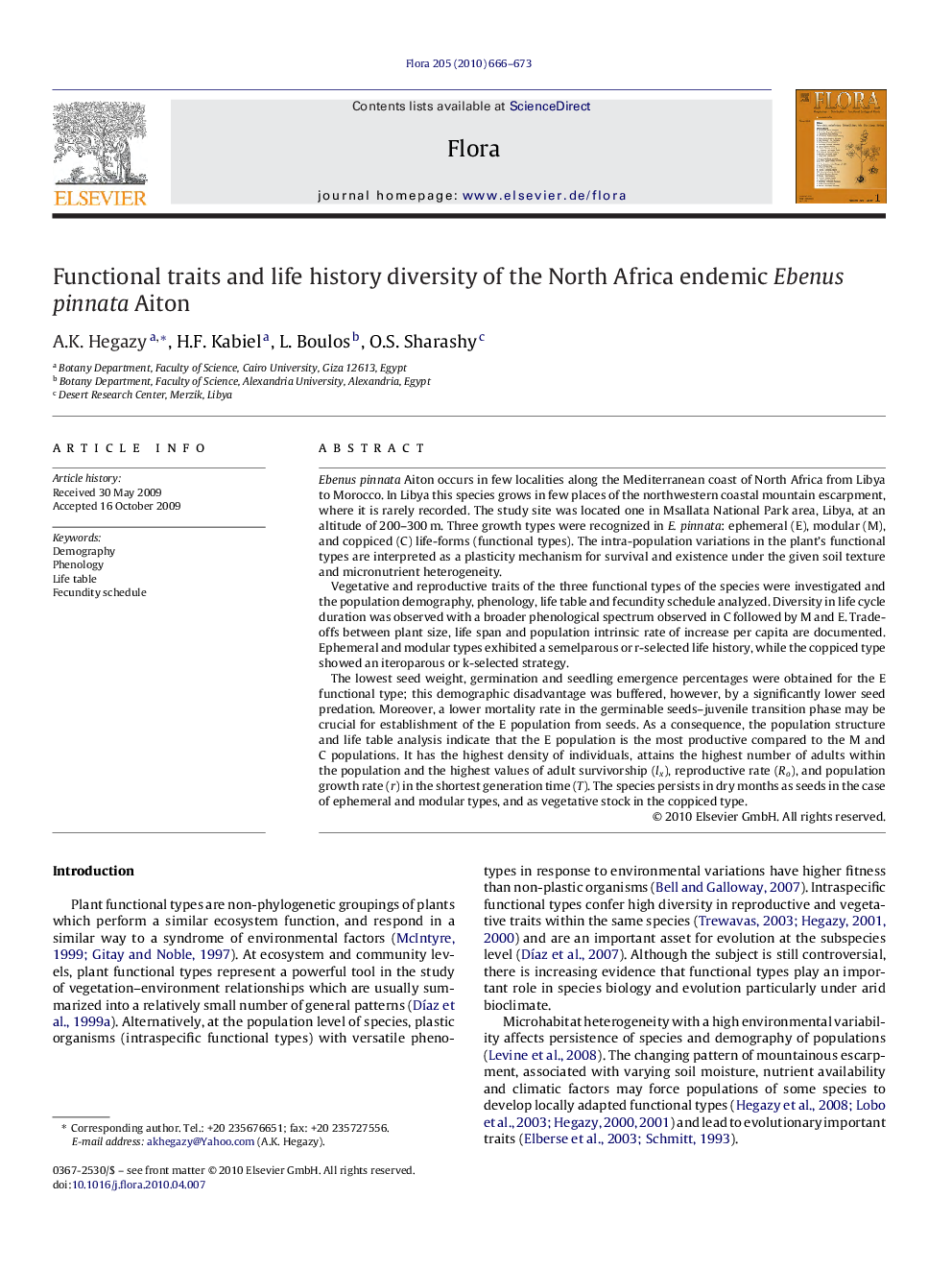| Article ID | Journal | Published Year | Pages | File Type |
|---|---|---|---|---|
| 2180001 | Flora - Morphology, Distribution, Functional Ecology of Plants | 2010 | 8 Pages |
Ebenus pinnata Aiton occurs in few localities along the Mediterranean coast of North Africa from Libya to Morocco. In Libya this species grows in few places of the northwestern coastal mountain escarpment, where it is rarely recorded. The study site was located one in Msallata National Park area, Libya, at an altitude of 200–300 m. Three growth types were recognized in E. pinnata: ephemeral (E), modular (M), and coppiced (C) life-forms (functional types). The intra-population variations in the plant's functional types are interpreted as a plasticity mechanism for survival and existence under the given soil texture and micronutrient heterogeneity.Vegetative and reproductive traits of the three functional types of the species were investigated and the population demography, phenology, life table and fecundity schedule analyzed. Diversity in life cycle duration was observed with a broader phenological spectrum observed in C followed by M and E. Trade-offs between plant size, life span and population intrinsic rate of increase per capita are documented. Ephemeral and modular types exhibited a semelparous or r-selected life history, while the coppiced type showed an iteroparous or k-selected strategy.The lowest seed weight, germination and seedling emergence percentages were obtained for the E functional type; this demographic disadvantage was buffered, however, by a significantly lower seed predation. Moreover, a lower mortality rate in the germinable seeds–juvenile transition phase may be crucial for establishment of the E population from seeds. As a consequence, the population structure and life table analysis indicate that the E population is the most productive compared to the M and C populations. It has the highest density of individuals, attains the highest number of adults within the population and the highest values of adult survivorship (lx), reproductive rate (Ro), and population growth rate (r) in the shortest generation time (T). The species persists in dry months as seeds in the case of ephemeral and modular types, and as vegetative stock in the coppiced type.
